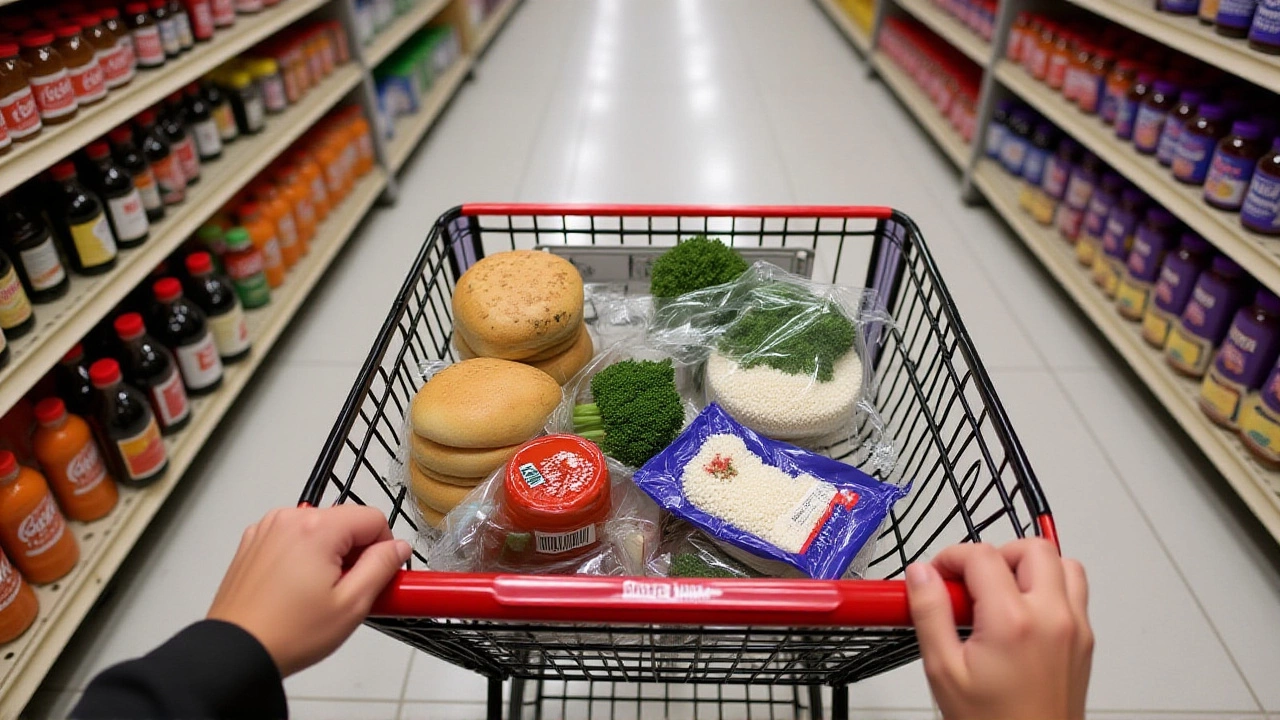Starting November 1, 2025, SNAP benefits will stop flowing to millions of Americans — not because of policy changes, but because Congress hasn’t funded the government. The U.S. Department of Agriculture confirmed the looming cutoff in an official notice posted October 27, 2025, just days before the deadline. This isn’t a budget cut. It’s a legal freeze. And for the Food and Nutrition Service, the USDA arm that runs SNAP, it’s a nightmare they thought they’d avoided.
Why October Payments Are Safe — But November Isn’t
Here’s the twist: SNAP recipients will get their October benefits. That’s because the Food and Nutrition Service uses an accounting quirk — it treats next month’s payments as "obligated" in the prior month. So October’s $125 billion in food aid was locked in using September’s appropriated funds. Simple. Clean. But November? That’s a different story.
The new fiscal year, FY2026, began October 1, 2025. No new appropriations. No continuing resolution. Just silence from Capitol Hill. That means FNS can’t legally obligate funds for November’s benefits. The Antideficiency Act, a 140-year-old law designed to prevent federal agencies from spending without authorization, kicks in. No money. No payments. Period.
The Human Cost in Real Time
Across the country, local governments are sounding alarms. On October 22, 2025, Adams County, Colorado — home to 567,000 residents in the Denver metro area — sent out a public notice to residents: "SNAP benefits may not be available after October 31." It wasn’t speculation. It was a warning based on direct communication with USDA.
That’s not an isolated case. Every state, every territory, every county that administers SNAP is bracing. An estimated 42 million Americans rely on the program — roughly 1 in 8 people. That’s 1.2 million children under 5. Over 5 million seniors. Families choosing between medicine and milk. Rent and rice.
"It’s not just about food," said a SNAP caseworker in Milwaukee, speaking anonymously. "It’s about whether a single mom can put her toddler to bed without wondering if she’ll eat tomorrow. We’ve seen this before. It breaks people."
What’s Different This Time?
Back in 2018, during the 35-day shutdown, USDA used multiyear reserves and OMB apportionments to keep SNAP running through February 2019. That’s not possible now. The U.S. Department of Agriculture didn’t publish a contingency plan for FY2026 — unlike in 2024. The agency’s internal guidance, once clear, has gone dark.
The Food Research & Action Center, a D.C.-based anti-hunger nonprofit founded in 1974, has been monitoring the situation closely. In a blog post on October 20, 2025, they warned: "Any disruption in benefits for WIC would put the health and well-being of young children and their families at risk." WIC — the Women, Infants, and Children program — is also in jeopardy. Both rely on the same funding pipeline.
"We’re not talking about a delay," said FRAC’s policy director in a recorded statement. "We’re talking about a cliff. And the fall is going to be brutal for the most vulnerable."
Who’s to Blame? And What Happens Next?
Technically, Congress is to blame. The funding deadline passed on September 30, 2025. Since then, partisan gridlock over spending priorities — defense, border security, social programs — has stalled all appropriations bills. No one’s willing to blink. No one’s willing to compromise.
But the real pressure is mounting. CBS News, reporting from its Washington, D.C., bureau on October 27, 2025, confirmed that EBT systems — the electronic cards millions use to buy groceries — will stop loading new funds on November 1. That’s not a rumor. That’s a system update already programmed by USDA contractors.
And here’s the kicker: even if Congress passes a deal on October 31, it won’t help. The accounting system can’t retroactively fund November. Benefits will be lost. For good.

The Ripple Effect
When SNAP stops, local food banks don’t magically expand. They’re already stretched thin. The Food Research & Action Center estimates that a full-month SNAP cutoff could increase demand at food pantries by 40% — a number they’ve seen before, in 2013 and 2018.
But this time, the economy is different. Inflation hasn’t fully receded. Wages are stagnant. Rent is up. And now, the safety net is being pulled.
"We’re not just talking about hunger," said Dr. Elena Ruiz, a public health researcher at Johns Hopkins. "We’re talking about long-term health outcomes — higher ER visits, worse childhood development, more diabetes. SNAP isn’t welfare. It’s preventive medicine. And we’re turning it off."
What’s the Timeline?
- September 30, 2025: Federal funding expires. Shutdown begins.
- October 1, 2025: FY2026 begins. No new appropriations.
- October 22, 2025: Adams County, Colorado, issues public alert.
- October 27, 2025: USDA confirms November benefit halt; CBS News reports.
- October 31, 2025: Final day to act — but even a deal won’t restore November benefits.
- November 1, 2025: EBT systems stop loading SNAP funds nationwide.
Frequently Asked Questions
Will SNAP recipients get paid for November if Congress acts before November 1?
No. Even if Congress passes a funding bill on October 31, it won’t restore November benefits. The Food and Nutrition Service’s accounting system requires obligations to be made in the prior month. Since no funds were appropriated before October 1, November’s payments cannot be legally processed. The system is frozen.
How many people will be affected by this SNAP cutoff?
Approximately 42 million Americans rely on SNAP monthly, according to USDA’s FY2024 data. That includes 1.2 million children under 5, 5.3 million seniors, and millions of working families earning below the poverty line. Every state and territory will see impacts — from rural Appalachia to urban Chicago.
What about WIC and other nutrition programs?
WIC, the Special Supplemental Nutrition Program for Women, Infants, and Children, is also at risk. Like SNAP, it depends on annual congressional appropriations. The Food Research & Action Center warns that WIC disruptions could lead to developmental delays in children and increased maternal health complications. No contingency plan exists for WIC either.
Is this the first time SNAP has been cut during a shutdown?
No. During the 2018-2019 shutdown, USDA used multiyear reserves to keep SNAP running through February 2019. But that’s not possible now. The agency didn’t publish a contingency plan for FY2026, and current funding mechanisms lack the same flexibility. This is a new, more dangerous scenario.
What can people do if they lose SNAP benefits?
Local food banks, churches, and nonprofits are preparing for a surge in demand. But they’re not equipped to replace SNAP’s scale. Families should contact their state’s human services agency for emergency food vouchers, though availability varies. Advocacy groups like FRAC urge people to contact their representatives — and document their struggles, as data is critical for future policy change.
Why hasn’t USDA prepared for this?
USDA had contingency plans in 2024, relying on OMB apportionments and multiyear funds. But for FY2026, no public plan exists. Internal documents suggest the agency assumed Congress would act — a dangerous assumption. With no leadership directive to prepare for a prolonged shutdown, the system is now unprepared. That’s not incompetence. It’s political negligence.

